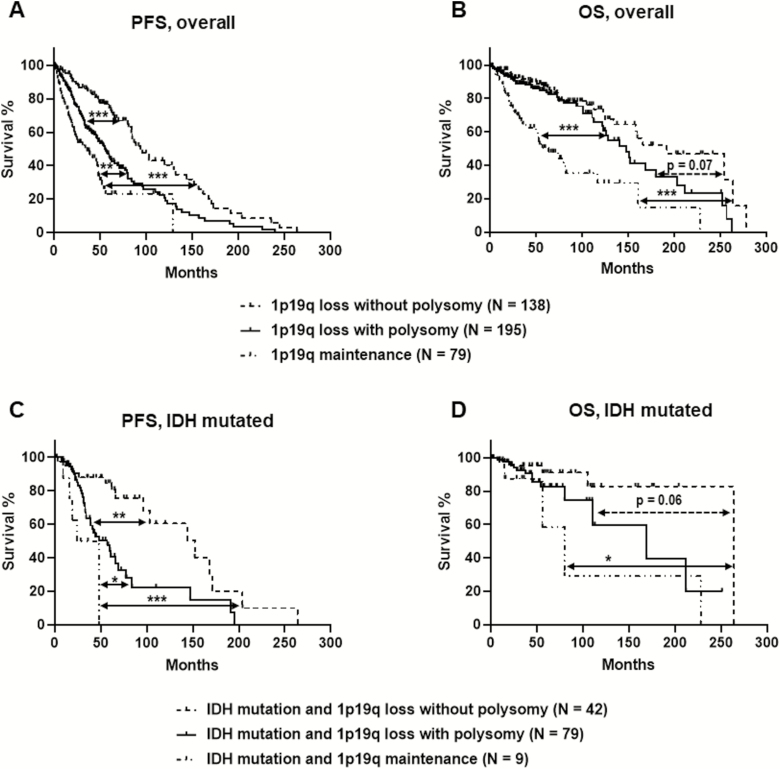Fig. 2.
Clinical outcomes from the presence and absence of polysomy in all patients with 1p/19q codeleted oligodendroglial tumors (A and B) and in a subset of patients with molecularly defined oligodendroglioma, IDH mutant and 1p/19q codeleted (C and D). (A) Kaplan–Meier estimate shows that tumors with 1p/19q loss and polysomy had worse PFS than did tumors with 1p/19q loss and no polysomy (P < 0.0001) and better PFS than did tumors with 1p/19q maintenance (P < 0.01). (B) Tumors with 1p/19q loss and polysomy had better OS than did tumors with 1p/19q maintenance (P < 0.0001) and a trend for worse OS than tumors with 1p/19q loss and no polysomy (P = 0.07). (C) Kaplan–Meier estimate shows that oligodendroglioma, IDH mutant and 1p/19q codeleted with polysomy has worse PFS than did tumors with 1p/19q loss and no polysomy (P < 0.01) and better PFS than did tumors with 1p/19q maintenance (P < 0.05). (D) Oligodendroglioma, IDH mutant and 1p/19q codeleted with polysomy showed a trend for worse OS compared with IDH mutated tumors with 1p/19q loss without polysomy (P = 0.06). *P < 0.05, **P < 0.01, ***P < 0.0001.

